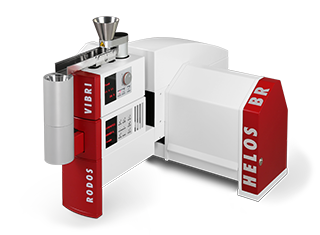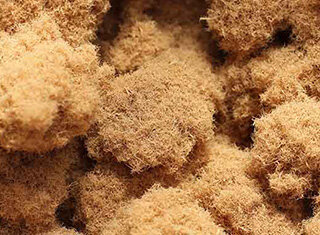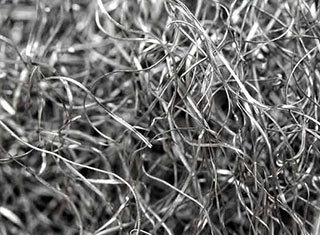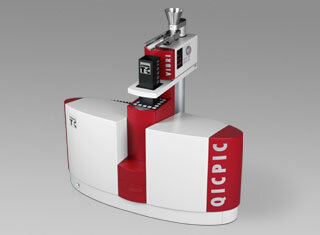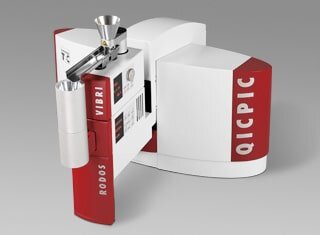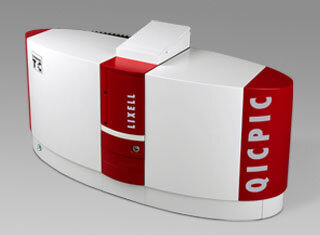Fibre separation from entangled collectives for the characterisation of dry fibres with lengths from 500 µm to 30,000 µm with dynamic image analysis
The configuration comprising image analysis sensor QICPIC and fibre pre-dispersion unit FIBROS offers fast and reproducible characterisation of dry fibres with lengths from 500 µm to 30,000 µm and diameters from 1.8 µm to 5,000 µm. FIBROS guarantees gentle and efficient separation and dosing even for heavily entangled fibre collectives. With the use of different combinations of standard laboratory sieves, carding units and brushes, the disperser can be optimally adapted for a wide range of different fibre types.
The interplay of a topside rotating brush, which rotates against a static carding unit, a lower side rotating air jet nozzle and an intermediate sieve ensures complete dispersion of the fibres. The fibres, which are gradually separated in the dispersion chamber of the FIBROS, are carried as a continuous, airborne particle flow through the GRADIS free fall shaft to the measuring zone and extracted again after the measurement. The high-speed camera of the QICPIC captures high-resolution projections of the individual fibres with 4.2 megapixels at an acquisition rate of 175 frames per second. The evaluation of the relevant size and shape parameters – including for complex fibres – is carried out with high-performance algorithms. In this way, several thousand fibres can be accurately determined in terms of fibre length (stack length), fibre diameter (fineness), straightness (or crimping) and elongation in one measurement that takes just a few minutes.
The adjustment and monitoring of the dispersion parameters that have been adapted to the fibres is performed with assistance from the software or via the control panel. Possible parameters relate to the rotation speeds and directions of the air jet nozzle and the brush, the primary pressure and the vacuum within the system.
The easy access to the dispersion unit and to the free fall shaft enables simple and thorough cleaning of the parts that come into contact with the fibres. FIBROS can be used both on a standard GRADIS or as a standalone system with shortened free fall shaft.
The modular concept of the QICPIC image analysis sensors allows this configuration to be systematically expanded with numerous dispersion units and dosing options, thereby opening it up to many more product-appropriate measuring applications.
- Fibre length, fibre diameter, straightness, elongation
- For dry fibres | Also in entangled fibre bundles
- For laboratory analyses
- 5 high-resolution measuring ranges | M5 to M9
- Fibre lengths from 500 µm to 30,000 µm
- Fibre diameters from 1.8 µm to 5,000 µm
- Gentle pre-dispersion with brush, carding unit and sieve
- Statistically relevant results | Thousands of fibres in just a few minutes






